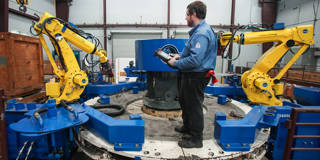China’s efforts to shift its economic model toward advanced industries demand a powerful US response. By driving investments toward advanced manufacturing, pursuing a strategic trade policy, and strengthening its workforce, the US can leverage its existing advantages to cement its leadership in the industries of the future.
WASHINGTON, DC – In the wake of the Great Recession of 2008-09, practically everyone seemed convinced that China’s economy would surpass that of the United States by 2030. Today, China is facing a range of crises that could spell doom for its economic “miracle.” In an effort to get back on track – and strengthen its strategic position – China has lately been seeking to position advanced industries, rather than real estate, as the economy’s main growth engine. How the US responds will help determine the outcome of the two countries’ strategic competition – and the future of the global economy.

WASHINGTON, DC – In the wake of the Great Recession of 2008-09, practically everyone seemed convinced that China’s economy would surpass that of the United States by 2030. Today, China is facing a range of crises that could spell doom for its economic “miracle.” In an effort to get back on track – and strengthen its strategic position – China has lately been seeking to position advanced industries, rather than real estate, as the economy’s main growth engine. How the US responds will help determine the outcome of the two countries’ strategic competition – and the future of the global economy.